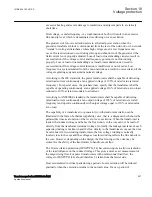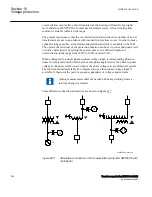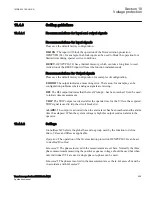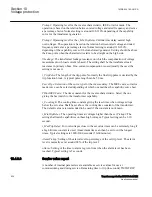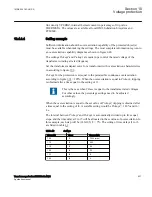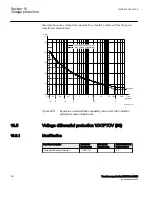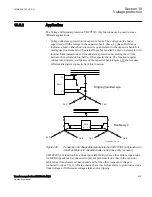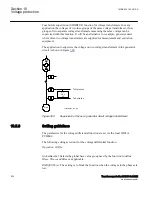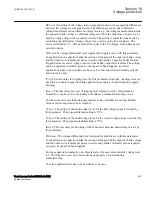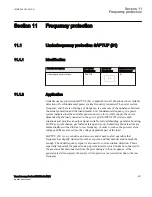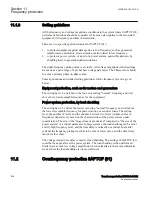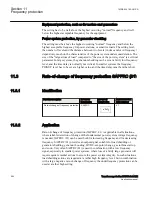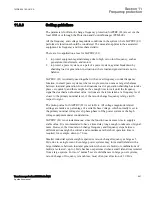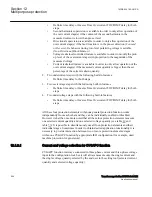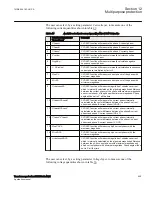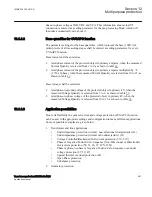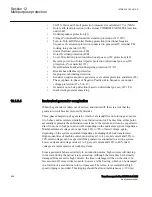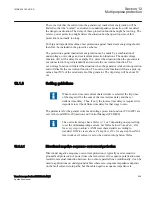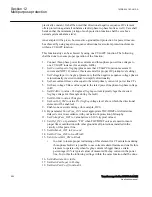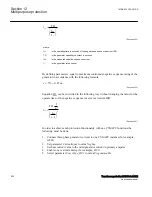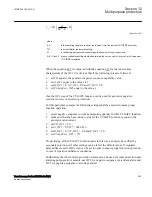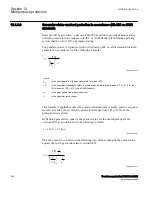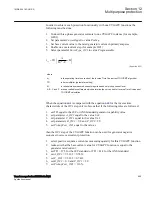
11.3.3
Setting guidelines
M14971-3 v7
The parameters for Rate-of-change frequency protection SAPFRC (81) are set via the
local HMI or or through the Protection and Control Manager (PCM600).
All the frequency and voltage magnitude conditions in the system where SAPFRC (81)
performs its functions should be considered. The same also applies to the associated
equipment, its frequency and time characteristic.
There are two application areas for SAPFRC (81):
1. to protect equipment against damage due to high or too low frequency, such as
generators, transformers, and motors
2. to protect a power system, or a part of a power system, against breakdown by
shedding load or generation, in situations where load and generation are not in
balance.
SAPFRC (81) is normally used together with an overfrequency or underfrequency
function, in small power systems, where a single event can cause a large imbalance
between load and generation. In such situations load or generation shedding has to take
place very quickly, and there might not be enough time to wait until the frequency
signal has reached an abnormal value. Actions are therefore taken at a frequency level
closer to the primary nominal level, if the rate-of-change frequency is large (with
respect to sign).
The pickup value for SAPFRC (81) is set in Hz/s. All voltage magnitude related
settings are made as a percentage of a settable base voltage, which normally is set to
the primary nominal voltage level (phase-phase) of the power system or the high
voltage equipment under consideration.
SAPFRC (81) is not instantaneous, since the function needs some time to supply a
stable value. It is recommended to have a time delay long enough to take care of signal
noise. However, the time, rate-of-change frequency and frequency steps between
different actions might be critical, and sometimes a rather short operation time is
required, for example, down to 70 ms.
Smaller industrial systems might experience rate-of-change frequency as large as 5
Hz/s, due to a single event. Even large power systems may form small islands with a
large imbalance between load and generation, when severe faults (or combinations of
faults) are cleared - up to 3 Hz/s has been experienced when a small island was isolated
from a large system. For more "normal" severe disturbances in large power systems,
rate-of-change of frequency is much less, most often just a fraction of 1.0 Hz/s.
1MRK 504 163-UUS A
Section 11
Frequency protection
Transformer protection RET670 2.2 ANSI
641
Application manual
Содержание RELION RET670
Страница 1: ...RELION 670 SERIES Transformer protection RET670 Version 2 2 ANSI Application manual ...
Страница 2: ......
Страница 48: ...42 ...
Страница 64: ...58 ...
Страница 74: ...68 ...
Страница 104: ...98 ...
Страница 194: ...188 ...
Страница 518: ...512 ...
Страница 618: ...612 ...
Страница 648: ...642 ...
Страница 666: ...660 ...
Страница 672: ...666 ...
Страница 682: ...676 ...
Страница 844: ...838 ...
Страница 868: ...862 ...
Страница 956: ...950 ...
Страница 964: ...958 ...
Страница 1004: ...998 ...
Страница 1014: ...1008 ...
Страница 1015: ...1009 ...

